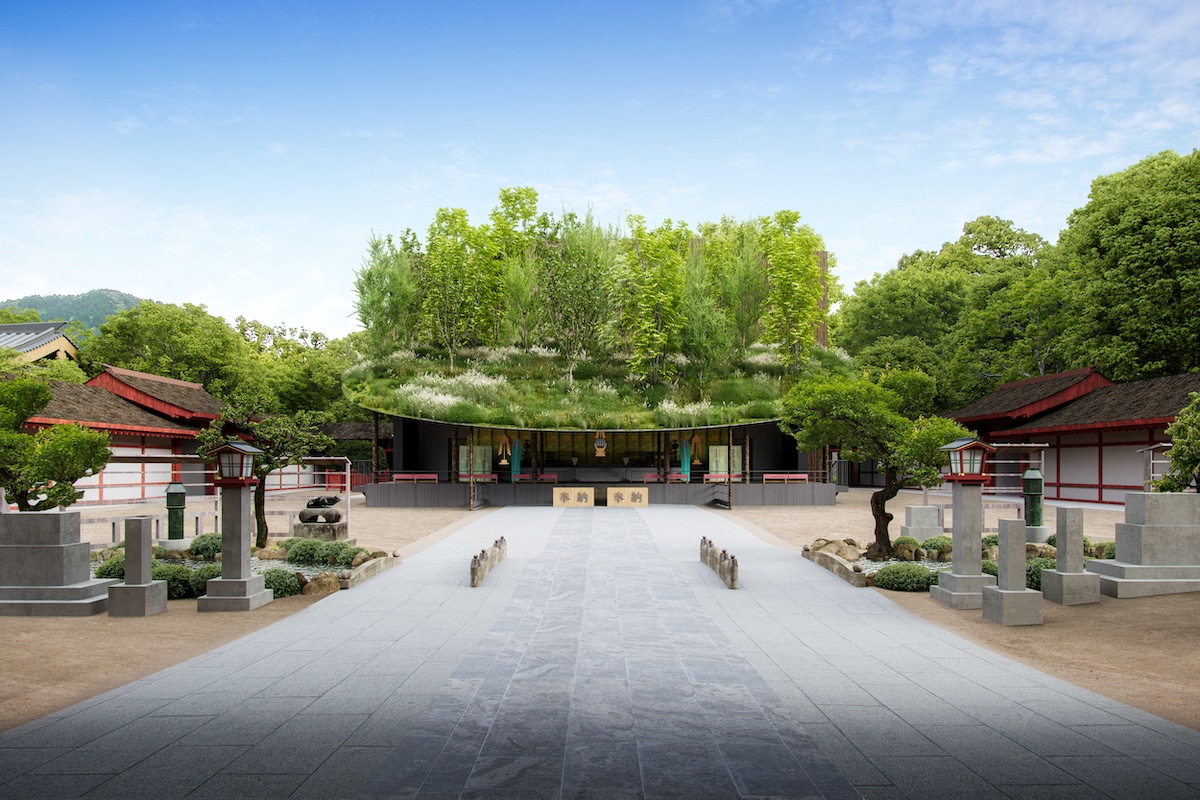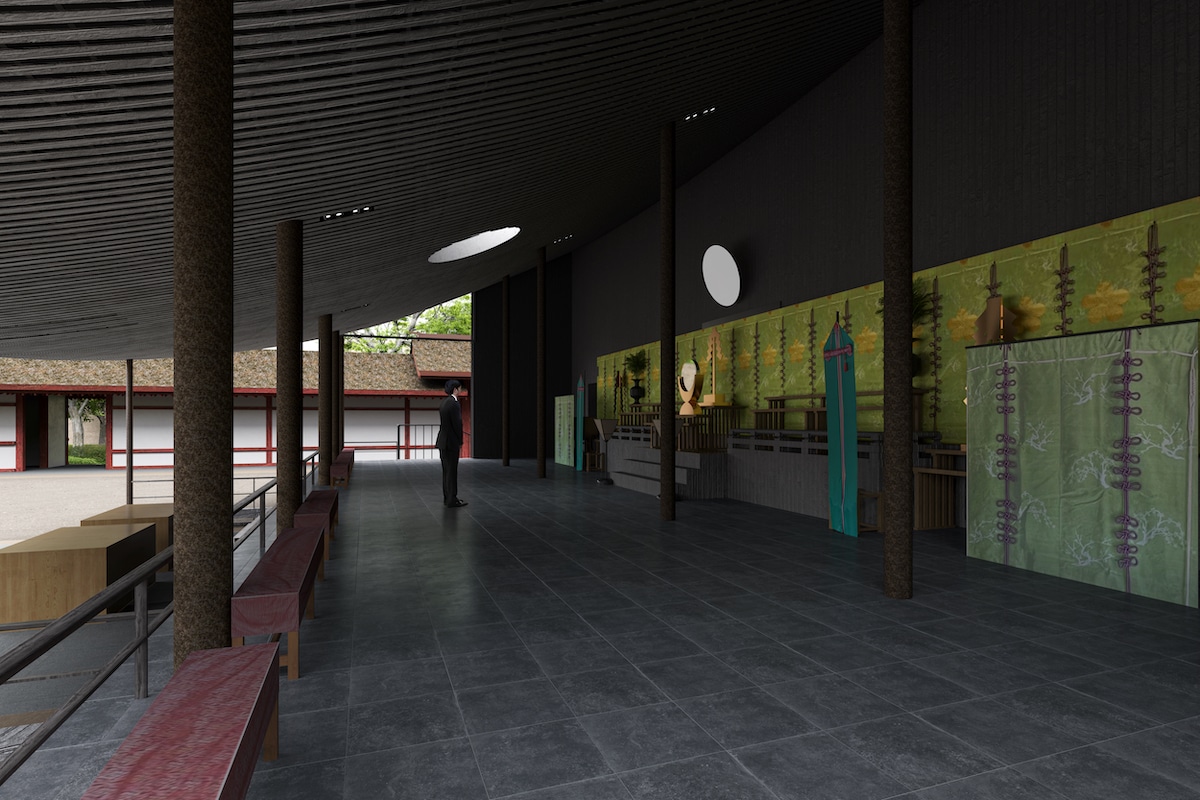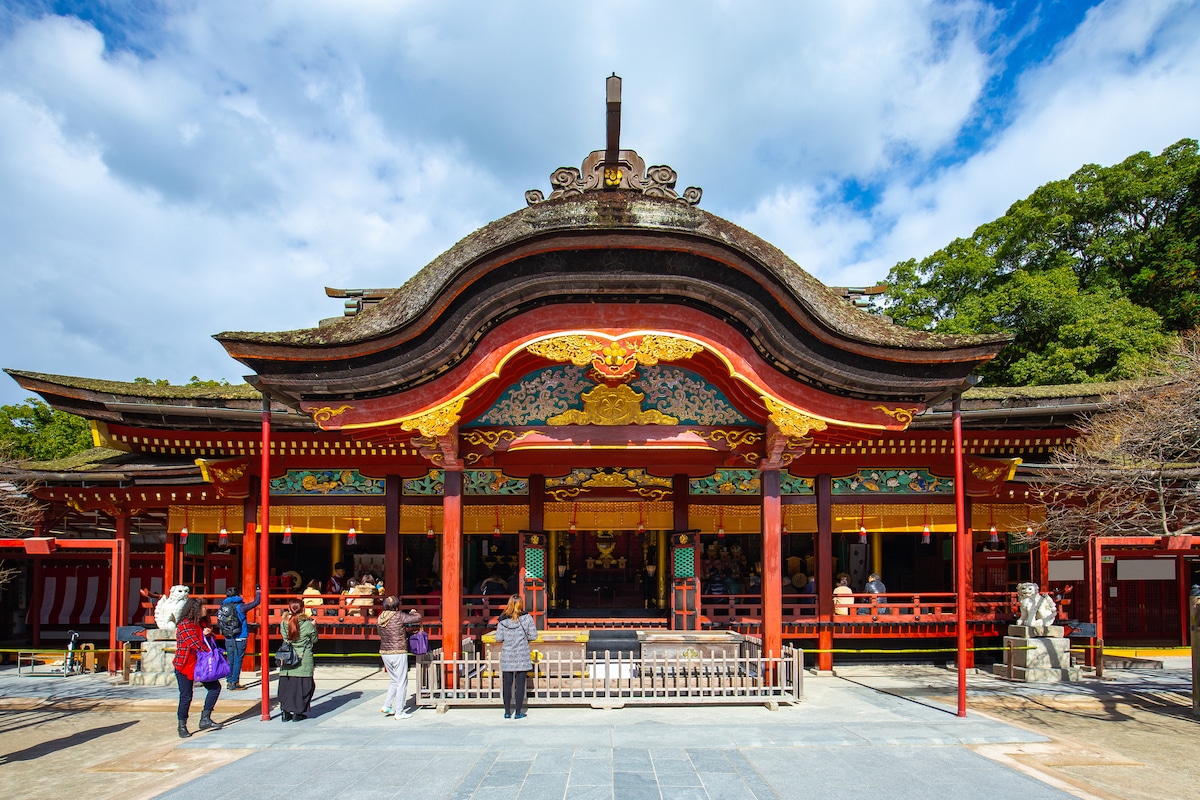
For the first time in over 120 years, the Dazaifu Tenmangu Shrine in Japan is being renovated. Over the course of three years, this important cultural monument will undergo critical maintenance and reconstruction. And so, Sou Fujimoto Architects were charged with creating a temporary hall that will welcome visitors during this time.
Set to be constructed in February 2023, the temporary hall’s sloped roof will be filled with greenery that blends the structure into the natural landscape. One of the many plants situated on the roof is the plum tree. This plant was specifically chosen due to its special connection with Sugawara no Michizane, the 9th-century BCE scholar and poet who is enshrined here. He is now celebrated in the Shinto religion as the god of learning.
Sou Fujimoto was inspired by the legend of the “flying plum tree.” Toward the end of his life, Michizane, who was a court scholar, was demoted after the ruling Emperor abdicated the throne. The scholar was then forced to move from Kyoto to Dazaifu. He wrote several poems lamenting the fact that he’d miss the plum tree at his Kyoto home. The legend of the flying plum tree states that his beloved tree flew all the way to be with him in Dazaifu. That tree, now known as tobi-ume, is now located at Dazaifu Tenmangu.
The way in which the greenery is planted makes them seem to fly around the shrine. The strong visual impact of the plants will evolve as the color change through the seasons. As visitors step inside, they are greeted by a louvered ceiling inspired by an architectural element known as taruki (rafters). Also found in the main shrine, it is intended to evoke spatial solemnity. Once further inside, a skylight will often a view of the forest and surrounding sky as a way to transport guests into the world of Dazaifu Tenmangu.
Sou Fujimoto Architects has designed a temporary hall to greet visitors at the Dazaifu Tenmangu Shrine.


The beloved Shinto shrine will be undergoing important renovations for the next three years.

Dazaifu Tenmangu Shrine in Dazaifu, Fukuoka Prefecture, Japan. (Photo: [email protected]/Depositphotos)
